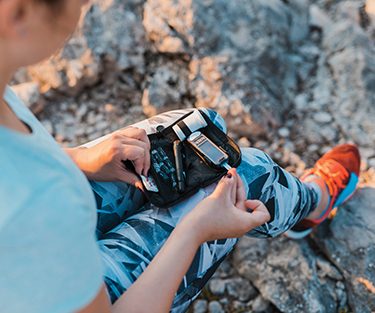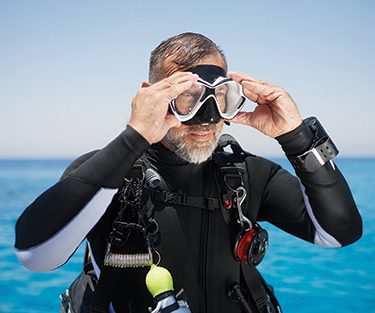Diabetes

About 422 million people worldwide (8.5 percent of the global population)46 — and about 34.2 million Americans (10.5 percent of the U.S. population) — are currently living with diabetes. Of the 34.2 million Americans with the disease, about 26.8 million cases (8.2 percent of the U.S. population) are diagnosed and 7.3 million are undiagnosed.47 Officially known as diabetes mellitus, the disease has two forms: In type 1 (also known as insulin-dependent) diabetes the body fails to produce enough insulin, which helps regulate blood glucose (blood sugar) levels. In type 2 diabetes the body develops a resistance to insulin. Of Americans with diabetes, the vast majority have type 2, with only about 1.6 million having type 1.
The prevalence of diabetes increases with age, with 26.8 percent of Americans age 65 and older having the disease. Every year about 1.5 million new diagnoses of diabetes are made in the U.S. In addition, 88 million Americans age 18 and older have prediabetes, which is characterized by blood glucose levels that are higher than normal but not high enough for a diabetes diagnosis.48 For more information, see diabetes.org.
Symptoms of untreated diabetes include weight loss, excessive urination, excessive thirst and increased hunger. Both types of diabetes are treatable with dietary measures and/or administration of insulin by injection. Other medications are available for type 2 diabetes. Weight control or weight loss, a nutritious diet and exercise can help prevent type 2 diabetes.
Many people with diabetes travel regularly without major problems. Some people with diabetes also participate in extreme sports, although it’s often against medical advice. When traveling abroad, people with diabetes — particularly those with type 1 diabetes — must take extra precautions.
The two major travel concerns for people with insulin-dependent diabetes are the availability of insulin and their ability to control their diet. Insulin may not be readily available in some locations and not all countries follow the same quality standards. Travelers must carry extra insulin with them in case they encounter travel delays.
The availability of healthy and safe-to-eat foods at your destination is a concern for people with both types of diabetes since following a consistently healthy diet is a key factor in managing the condition. It is essential that travelers with diabetes research the available cuisine and its safety in any countries they expect to visit and plan ahead about how they will meet their dietary needs.
Traveling also induces stress that can cause variations in individuals’ daily needs for insulin, so they must be more vigilant in monitoring their blood sugar levels. Those with recently diagnosed diabetes should not travel until they have mastered good control of their blood sugar levels.
Individuals with diabetes who plan to scuba dive face other issues of particular concern. In previous years individuals with diabetes (especially type 1) who chose to dive typically did so against medical advice by hiding their condition. More recently, however, there has been a shift away from a blanket prohibition on diving with diabetes, due in part to antidiscrimination laws and to the growing record of safe diving by individuals with diabetes. It is now possible in many countries for people with diabetes to receive dive training and to dive safely.
Participants in an international workshop sponsored by DAN and the Undersea and Hyperbaric Medical Society in 2005 reached agreement that prospective divers who are able to control their diabetes with either dietary measures or medication and who are otherwise qualified to dive may undertake recreational scuba diving provided they meet certain criteria. The Recreational Scuba Training Council in the United States ratified this conclusion.
The criteria are detailed in the full consensus guidelines, which consist of 19 points that are divided into three sections:
- Selection and surveillance
- Scope of diving
- Glucose management on the day of diving
For a summary of the guidelines, see DAN.org/diabetes. For the full text of the guidelines, see DAN.org/DiabetesSummary. DAN also offers a free online seminar on diving safely with diabetes at DAN.org/education-events/elearning.
The guidelines contain practical recommendations for medications and procedures in case a diver develops hypoglycemia (low blood sugar) underwater. Individuals with diabetes, as well as their buddies and dive leaders, should be aware of the status of any divers with diabetes and knowledgeable about the signs and symptoms of hypoglycemia and the procedures that may be required in case a problem arises.
Divers with diabetes can be very sensitive to manifestations of hypoglycemia. Many people will feel early warning signs such as weakness, nausea, blurred vision, sweating, anxiety or trembling. As the diver’s blood sugar continues to drop, fatigue will set in and changes in mental status can occur. An affected diver may eventually become combative or unaware of their surroundings. In severe cases, they may lose consciousness or have seizures. Episodes of hypoglycemia that lead to changes in mental status or seizures can result in drowning.

The two major travel concerns for people with insulin-dependent diabetes are the availability of insulin and their ability to control their diet.

Participants in an international workshop sponsored by DAN and the Undersea and Hyperbaric Medical Society in 2005 reached agreement that prospective divers who are able to control their diabetes with either dietary measures or medication and who are otherwise qualified to dive may undertake recreational scuba diving provided they meet certain criteria.

Individuals with diabetes, as well as their buddies and dive leaders, should be aware of the status of any divers with diabetes and knowledgeable about the signs and symptoms of hypoglycemia and the procedures that may be required in case a problem arises.
DAN Customer Service
Mon–Fri, 8:30 a.m. – 5 p.m. ET
+1 (919) 684-2948
+1 (800) 446-2671
Fax: +1 (919) 490-6630
24/7 Emergency Hotline
In event of a dive accident or injury, call local EMS first, then call DAN.
24/7 Emergency Hotline:
+1 (919) 684-9111
(Collect calls accepted)
DAN must arrange transportation for covered emergency medical evacuation fees to be paid.
Medical Information Line
Get answers to your nonemergency health and diving questions.
Mon–Fri, 8:30 a.m. – 5 p.m. ET
+1 (919) 684-2948, Option 4
Online: Ask A Medic
(Allow 24-48 hours for a response.)